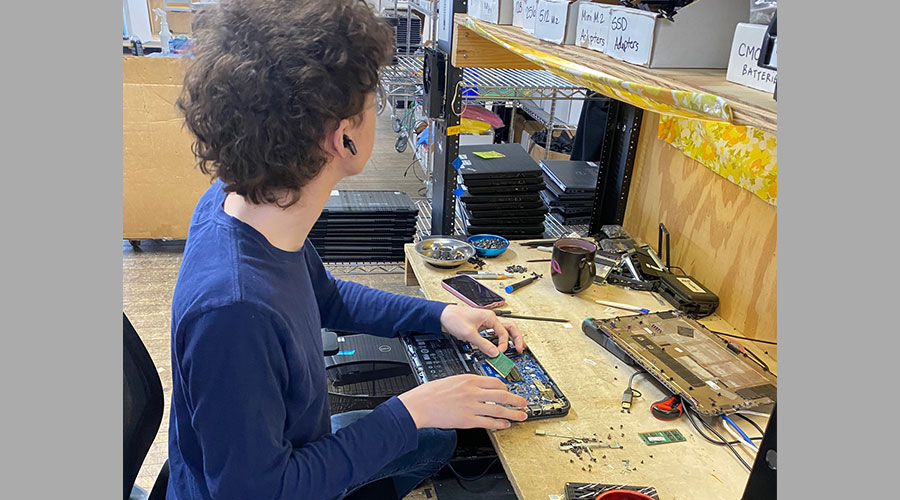Solar Industry Continues To Grow, Price Continues To Decrease
By Greg Zimmerman, Executive Editor
OTHER PARTS OF THIS ARTICLEPt. 1: This Page
The solar industry continues to grow by leaps and bounds. And the price for solar installations continues to decrease as more creative financing options are available for facility managers interested in taking a new look at solar.
As an example of solar’s growth, in early May, President Obama announced that a long-planned solar installation on the White House had been completed. It marks the first time since 1986 that the White House will be partially powered by its own photovoltaic installation.
Overall, according to statistics from the Solar Energy Industry Association (SEIA), at the end of 2013, the total installed solar capacity in the U.S. exceeded 13 gigawatts. There was an increase of more than 5 GW of solar electricity installed from 2012 to 2013, and solar represented 29 percent of all new energy generation installations in 2013.
“Most owners haven’t had opportunity to look into solar market today,” says Tom Kimbis, vice president of executive affairs for SEIA. “They’re working off older information or misconceptions of technology. Solar is competitive in dozens of states today. Every year, more and more areas are competitive.”
Kimbis says the most illustrative example of solar’s growth and cost competitiveness is how often large companies are using solar these days. For instance, WalMart, at the end of 2013, led the country in solar installations with 89 installed megawatts. Costco is second with 47 MW, Kohl’s third with 45 MW, and Apple is fourth with 41 MW.
“You think these companies don’t understand the bottom line?” says Kimbis. “For them, solar is not a public relations move. There are soft benefits, of course, but at the end of the day, this saves money.”
Of course, not every, or even most, facility managers have the roof space and budget of these large companies. But for them, the financing options for solar are increasing. And according to Kimbis, under any financing option, facility managers will get benefits from solar from Day 1.
Leasing roof space for a solar panel installation and what’s called a Power Purchase Agreement (PPA) are two options for facility managers.
In a lease agreement, two parties — the owner of the building and a third party — enter into an agreement whereby the third-party agrees to lease the roof space from the owner. It then installs the solar system, and then can sell the electricity back to the building’s owner, usually at a reduced rate compared to standard utility rates. The third-party company owns and operates the solar system, and is responsible for maintenance and repairs.
In the case of a PPA, a third-party company again owns and operates the solar system, and the owner agrees to buy the power from the system for a predetermined amount of time. The benefits here are that the third-party company receives the tax benefits of the solar system, while the owner still gets less expensive renewable energy.
The differences between the two agreements are really negligible, and which one is better depends on the tax appetite of the owner, and possibly incentives available. This article has more information about the differences between a lease and a PPA. Owners should do their due diligence to determine which arrangement might result in the greater financial benefit for their organization.
Another option for owners is to include solar in a comprehensive energy performance contract — an arrangement that is happening more and more frequently, according to Kimbis.
Finally, of course, owners can simply pay cash for their solar system. Costs are coming down, and that’s not just because panels are becoming less expensive, says Kimbis. Panels are only about 20 to 25 percent of the total cost of the system, he says. The rest is the racking, electrical, wiring, and labor and installation. The average cost per watt of solar at the end of 2013 was $4.59, according to SEIA data — that’s down 9 percent from 2012.
“The industry is becoming smarter and more agile,” Kimbis says. “Leaders are stepping forward to do things in a more efficient manner. Installing systems quickly and efficiently continues to lower the cost.”
Related Topics:











